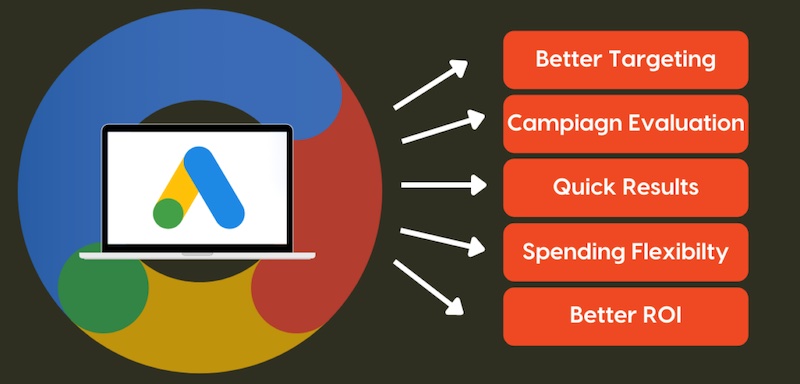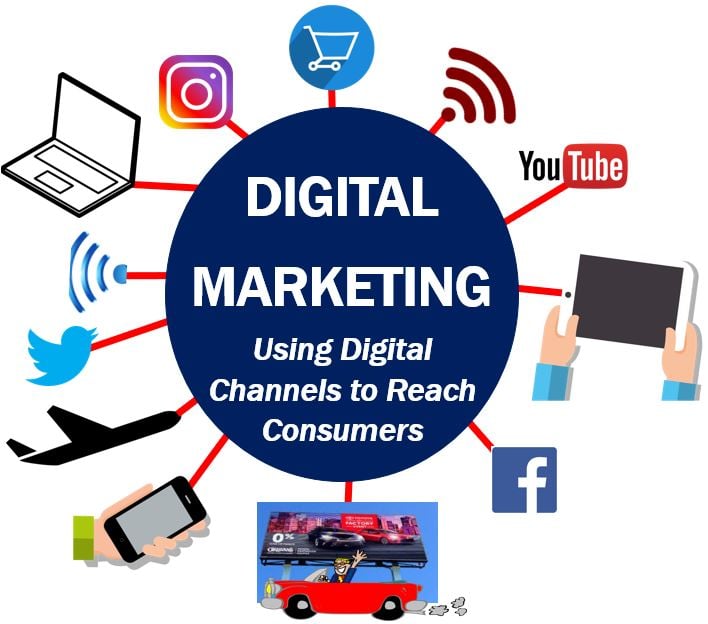
When it comes to Google Ads, digital marketing revolves around creating and managing advertising campaigns on Google’s advertising platform. Google Ads allows businesses to display their ads prominently on Google’s search engine and across its extensive network of partner websites. Here’s a breakdown of digital marketing in the context of Google Ads:
1. **Search Engine Advertising (Google Search Ads)**:
– **Keywords**: Selecting relevant keywords related to your products or services that trigger your ads when users search on Google.
– **Ad Copy**: Crafting compelling ad copy that entices users to click on your ads.
– **Bid Strategy**: Setting bid amounts for your keywords to compete for ad placement in search results.
– **Ad Extensions**: Utilizing ad extensions like site links, callouts, and location extensions to provide additional information.
2. **Display Advertising (Google Display Ads)**:
– **Banner Ads**: Designing visually appealing banner ads that are displayed on websites within Google’s Display Network.
– **Audience Targeting**: Targeting specific demographics, interests, and behaviors to reach a relevant audience.
– **Remarketing**: Showing ads to users who have previously visited your website, helping to re-engage potential customers.
3. **Video Advertising (YouTube Ads)**:
– **Video Content**: Creating engaging video ads to be displayed on YouTube and across the Display Network.
– **In-stream vs. Discovery Ads**: Choosing between in-stream ads (played before or during YouTube videos) and discovery ads (featured in YouTube search results).
4. **Shopping Advertising (Google Shopping Ads)**:
– **Product Listings**: Creating product listings that showcase your products with images, prices, and other relevant details.
– **Merchant Center**: Setting up and managing a Google Merchant Center account to connect your product data to Google Ads.
5. **Mobile Advertising**:
– **Mobile-Optimized Ads**: Ensuring that your ads and landing pages are optimized for mobile users.
– **App Advertising**: Promoting mobile apps through ads in app stores and within other mobile apps.
6. **Remarketing**:
– **Dynamic Remarketing**: Displaying personalized ads to users based on their previous interactions with your website or products.
7. **Conversion Tracking and Analytics**:
– **Conversion Tracking**: Implementing conversion tracking to measure and optimize the performance of your ads.
– **Google Analytics Integration**: Integrating Google Analytics to gain deeper insights into user behavior and the effectiveness of your campaigns.
8. **Budget Management**:
– **Daily and Monthly Budgets**: Setting and managing your advertising budget to control costs.
– **Bid Adjustments**: Adjusting bids based on device, location, and other factors to maximize ROI.
9. **Ad Testing and Optimization**:
– **A/B Testing**: Continuously testing different ad variations to improve click-through rates (CTR) and conversion rates.
– **Quality Score Improvement**: Optimizing ad relevance and landing page experience to improve ad rankings and reduce costs.
10. **Reporting and Analysis**:
– **Performance Reports**: Regularly reviewing campaign performance data to make informed decisions and refine your strategies.
Google Ads offers a comprehensive suite of tools and features to help businesses reach their target audience, drive website traffic, generate leads, and ultimately achieve their advertising goals. Effective management and optimization are key to a successful Google Ads campaign.

we at admysys as google partner can provide you, 600CAD ads coupon to start Paid ads ads
